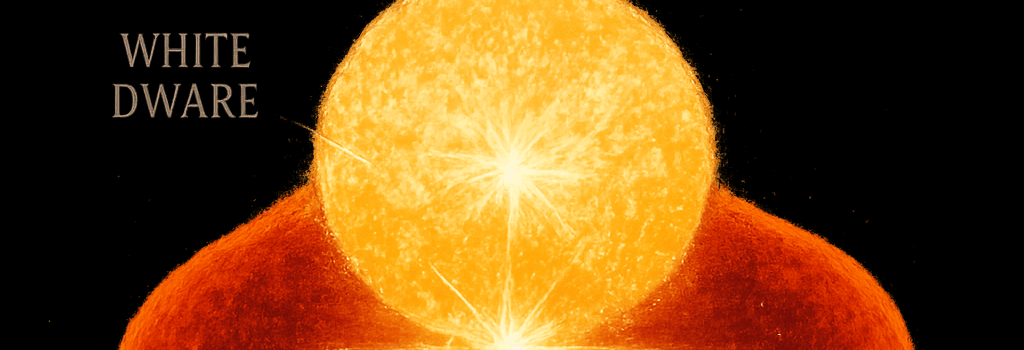Double-Detonation Mechanism in Type Ia Supernovae Evidence

Introduction
Type Ia supernovae have long served as cosmic mileposts, their near-uniform peak luminosity enabling precise measurement of extragalactic distances and revealing the accelerated expansion of the Universe. Yet, despite decades of study, the precise trigger mechanism for these thermonuclear explosions remains debated. Recent high-resolution spectroscopy and hydrodynamic simulations now strengthen the double-detonation hypothesis, in which a surface helium flash ignites a deeper carbon-oxygen runaway before a white dwarf reaches the Chandrasekhar limit.
Deconstructing White Dwarfs
White dwarfs are electron-degenerate remnants of low- to intermediate-mass stars (≈0.5–1.4 M☉), typically composed of carbon and oxygen. Supported by electron degeneracy pressure, they cannot fuse their core fuel under normal conditions. In binary systems, however, mass accretion from a companion or merger with another white dwarf can push stellar cores to densities (ρ > 107 g cm−3) sufficient for thermonuclear ignition.
- Accretion Pathway: Roche-lobe overflow deposits hydrogen or helium, gradually increasing mass.
- Merger Pathway: Two white dwarfs coalesce via gravitational-wave radiation, producing a super-Chandrasekhar object.
While both pathways explain many observations, population synthesis models (e.g., those using the BSE code) suggest they may not fully account for the observed Type Ia rate. This has spurred investigation into alternative triggers.
The Double-Detonation Mechanism
- Helium Shell Ignition: Accumulated helium on the surface compresses to T > 108 K in localized hotspots, initiating a detonation.
- Core Compression: The shock from the helium flash propagates inward, raising core densities above the fusion threshold for carbon and oxygen.
- Carbon-Oxygen Runaway: A second detonation ensues in the core, unbinding the white dwarf.
“Double detonation allows sub-Chandrasekhar white dwarfs to explode, broadening the diversity of Type Ia progenitors,” notes Dr. Elena Müller (Max Planck Institute for Astrophysics).
Observational Signatures: Calcium Shells in SNR 0509–67.5
In July 2025, P. Das et al. employed the ESO Very Large Telescope’s MUSE spectrograph to resolve layered ejecta in the 300-year-old remnant SNR 0509–67.5 within the Large Magellanic Cloud. They detected two distinct calcium shells separated by sulfur-rich ejecta, matching yields from FLASH and CASTRO hydrodynamic models:
- Inner calcium shell at ≈4 000 km s−1
- Sulfur layer at ≈6 500 km s−1
- Outer calcium shell at ≈9 000 km s−1
These velocity stratifications are consistent with a helium shell mass of ≈0.03 M☉ atop a 1.0 M☉ core. Nucleosynthesis post-processing indicates ≈0.01 M☉ of 44Ti and ≈0.15 M☉ of 56Ni were produced, matching observed light-curve tail luminosities.
Implications for Cosmology
If double detonations occur frequently, peak luminosities may vary more than previously assumed. Sub-Chandrasekhar explosions tend to synthesize less 56Ni, leading to faster-declining light curves. This could introduce a systematic bias in cosmological distance estimates if not properly calibrated. Surveys like the Vera Rubin Observatory’s LSST will accumulate thousands of nearby Type Ias, enabling improved standardization algorithms that incorporate spectroscopic indicators (e.g., Si II velocity gradients).
Advances in Simulation and Modeling
Recent breakthroughs in 3D hydrodynamic simulations (e.g., using AREPO and GPU-accelerated Enzo) have yielded resolution down to 1 km in the burning front. These models capture asymmetries in shell ignition, predicting off-center detonations that can produce observable spectropolarimetric signatures. Collaborative projects, such as the European Union’s NuSTAR-Astro consortium, are integrating neutrino detection predictions to cross-validate explosion energies.
Future Observational Prospects
- JWST Mid-IR Spectroscopy: Will trace unburned helium via the 1.083 μm line in young remnants.
- Neutrino Telescopes: Facilities like IceCube-Gen2 may detect neutrino flux from sub-Chandrasekhar detonations within 1 kpc.
- X-ray Interferometry: Proposed missions (e.g., Lynx) could spatially resolve shell structures in older remnants beyond the Local Group.
Conclusion
The layered calcium signatures in SNR 0509–67.5 provide the most direct evidence yet for double-detonation Type Ia events. As simulation fidelity and multi-messenger observations improve, we anticipate a more nuanced taxonomy of thermonuclear supernovae—one that refines our cosmic distance ladder and deepens our understanding of stellar death.